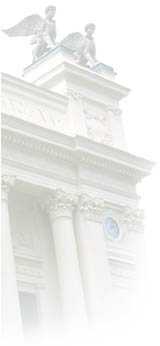Opponent groups
Each group will have to be opponent on two student
presentations. The
opposition consists in reading the paper a little more
carefully than you would otherwise have done - and write
down things you don't understand or that you find could
be discussed more/better than in the paper - or things
that are not discussed at all.
From this list of questions you select three that you find
are the most important/interesting and give them to the
lecturer(by email or on paper) before the presentation. These questions
will then be used to facilitate/structure the 10-15 minutes
of discussion that there is after each presentation.
This list of previous questions might serve as inspiration:
- What are, in your opinion, the most important rules of conduct
when working in distributed groups or with outsourcing projects?
- What architecture could they have used in the IBM-example (work
around the clock)? Here they had distributed/co-located groups over
different continents and time zones.
- Can you come up with some examples of required formal agreements
when working the more "tricky" environments (e.g. outsourcing and
distributed groups)?
- Are we going towards work situations with more and more dispersed
groups? Is it necessary to emphasize the need for locally organised
projects or do we need to find better solutions (enhanced architecture)
for the distributed projects? Compare relocation of personnel vs.
relocation of information.
- When using a common code base in a big, multi-site project, how
can integration and testing be handled?
- Ulf Asklund is lobbying for the last of the CM methods (several
sites with equal servers) - do you agree? Do you see any further
problems with this approach?
- What are the potential drawbacks of schemes using locking? Can
you give examples of development scenarios and development project
types where locking would usually be desired - and, vice versa, where
an optimistic (non-locking) approach would be more suitable?
- This article (Feiler) was written 10 years ago, how is the long
transaction model used today and in which tools?
- How can change sets help us in tracking changes and make us
follow the rules of good conduct?
- What are the criteria for choosing one of Feiler's configuration models:
- number of developers?
- kind of product needed?
- size of project?
Updated October 24, 2007 |

